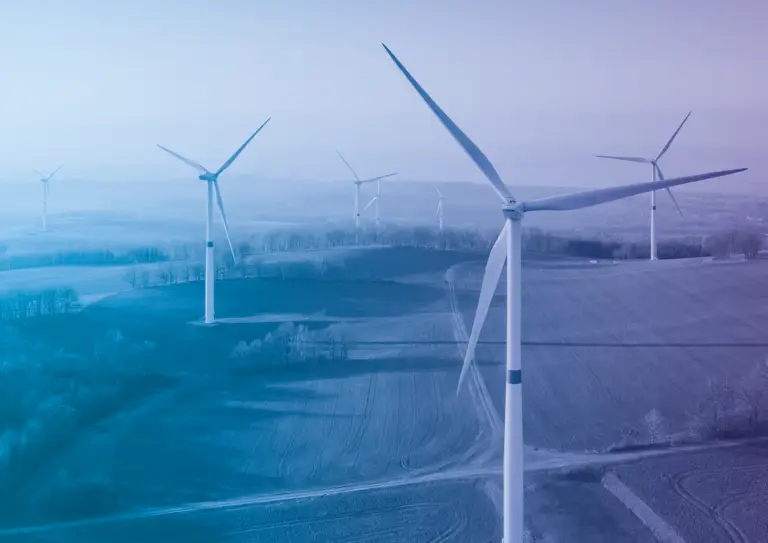On the 5th November, NESO published their advice to government on what needs to be done to reach the ambitious 2030 clean power target.
Setting out two different pathways, the report is a landmark document which will formulate the basis of the government’s direction on energy policy to 2030 and beyond.
PLMR has produced a report consolidating the recommendations put forward in NESO’s document, which you can read here, alongside our specific analysis below.
NESO highlights the opportunity for British energy – but battles lie ahead for the government
Remember, remember the 5th of November, as the old saying goes. It wasn’t gunpowder and treason this time around, but there were certainly fireworks as the US went to the polls, and here in the UK there was plot – as the new National Energy System Operator (NESO) set out its recommendations to the government for how the sector can reach 2030 clean power.
Here are five takeaways from this milestone report.
1. Clean power is possible*
NESO’s headline recommendation – and the one that government was keen to lead with in its own communications around the report – is that clean power is achievable by 2030. However, NESO describes it as ‘at the limits of what is feasible’, requiring £40bn of annual investment, rapid reform of planning and consenting, strategic management of supply chains, and huge upgrades to the grid.
The definition of clean power also requires an asterisk. It doesn’t, as one might instinctively think, mean that the grid will be powered by 100% clean power, but rather that clean power will represent an average of 95% of generation annually – with unabated gas providing the rest – and Britain exporting more clean power overseas than provided by this 5%. The ‘new dispatch’ scenario (one of two provided, alongside ‘further renewables and flex’) also relies on an increase in gas generation with CCS – which may only be partially abated – or hydrogen – which may itself come from gas. So, arguably, clean power isn’t exactly possible by 2030 – but we can get close.
2. But at what cost?
One of Labour’s leading arguments for implementing the CP2030 target has been that it will reduce household bills by cutting reliance on volatile fossil fuels. However, the ‘new dispatch’ scenario would still see gas used 47% of the time, and the NESO report is more equivocal in its overall assessment of cost across its two pathways, instead stating that the transition can provide multiple benefits ‘without increasing costs to consumers’. This is a subtle but significant difference. Expect the opposition to push the government hard on the costs of the transition, and play up controversies around required new infrastructure – especially under the Conservative’s combative new leader, and with the election of Donald Trump promoting a very different narrative in the United States.
3. A vastly more renewable grid – but legacy assets still required
It is fitting that this milestone report for the future has been produced so soon after the UK closed its final coal plant, but whilst the focus of CP2030 is the need for a massive increase in new renewable infrastructure across wind and solar, and an accompanying increase in flexibility from storage and demand-side response, the report is also clear that we will need to keep older assets on stream for some time to help manage both growing demand and increased intermittency – particularly in winter. Notably, this includes retaining the entire existing fleet of gas power stations, required to remain as ‘strategic reserve’ – despite their overall share of generation dropping precipitously to less than 5% (depending on how many are converted to CCS). This will require an increase in revenues from mechanisms such as the Capacity Market. New dispatchable power would also be welcomed by NESO, such as CCS and hydrogen-fuelled plants, which could help replace the system value added by gas without (so much) accompanying carbon. Given that these technologies can also play a role in providing jobs and transitioning legacy industries – retaining backing from trade unions – expect the government to continue to provide strong support.
The report also calls for the life extension of the current nuclear fleet to provide a body of firm generation, but new nuclear in the shape of SMRs don’t feature in the 2030 projections given they are not expected to be online by then. Policy on new nuclear is still lacking from the government at present, however there is clear recognition of the value this can offer the system in future – and retaining the current nuclear workforce in new projects will be key to realising this.
4. The battle for connection
CP2030 makes a clear recommendation that there will need to be more active management of the connections queue if the right assets are to come forward to meet not just 2030 but the targets beyond this too (including the Strategic Spatial Energy Plan). Alongside the CP2030 paper, the 5th November also saw a joint letter from DESNZ and Ofgem on connections reform to this end, and NESO produce its next phase consultation on the process.
NESO now proposes that projects should be assessed not just against readiness but also ‘strategic alignment’ with CP2030 and other future plans, based on technology and location. This is borne from a desire to cut the overall size of the queue, strip out speculative projects, and avoid perceived regional and national overcapacity of certain technologies. However, this will place major additional burdens on both industry and the system operator. Responding to this consultation – in particular the methodologies to assess need – is one of the key formal mechanisms for industry to interact with CP2030, though Ofgem will also consult on the changes in early 2025.
Other measures to reduce the queue will be controversial, in particular the proposed financial instrument, requiring a downpayment of £20k per MW. Applying this retrospectively to developers who have had projects in the queue for many years will prove highly controversial if taken forward, risking investor confidence, and benefitting larger players with easier access to capital.
The government is likely to legislate to mitigate the risks of legal challenge, but the battle for connections has a way to run yet.
5. All eyes on the Commission
The government is due to respond to the NESO report with its Clean Power Action Plan before the end of the year. This will be led by Head of Mission Control, Chris Stark, supported by the Clean Power Commission – the body of eight industry experts compiled by the government earlier this year.
Some initial views were provided on social media by Stark on the day of publication, and there is likely to be strong alignment with NESOs advice, but time is short for industry to make its views known to the Commission.
One of Stark’s initial reflections is that both of the NESO pathways should be kept open as long as possible, so no sector should be left behind entirely in this plan, but it is clear that the government is about to embark on a contentious process of picking winners – and many will feel their sector has been undervalued in its potential.
The 2030 prize, if it delivers on its promise, is significant – and the industry is energised by the ambition. However, last week’s publications also showed that the pathway to delivery is highly fraught. The 5th of November may once again be looked back on as an explosive date in the British political calendar.






